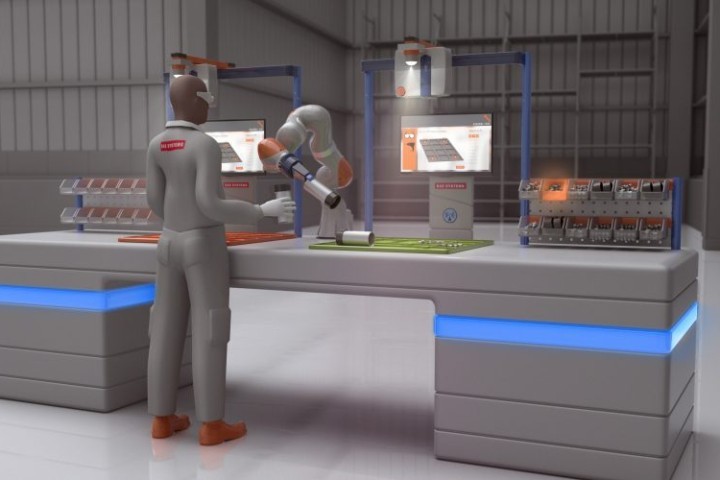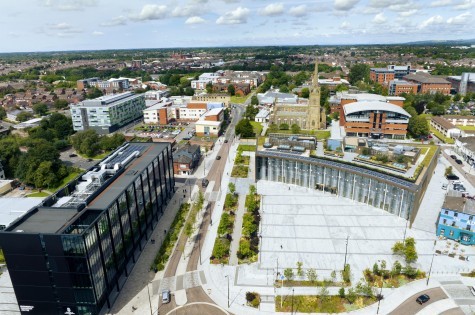The cobotic workstation is fitted with a range of digital technology that will work safely and seamlessly alongside the human workforce.
The technologies that have been developed – including operator recognition and a sensor-enabled cobotic arm – will be tested on the Typhoon production line by the end of this year, marking the latest step in BAE Systems’ strategy to continually invest in and enhance its manufacturing capabilities to deliver the aircraft of the future.The technology will allow the worker to make strategic decisions while delegating to the cobotic arm repetitive, machine-driven tasks which require consistency. This will enable engineers to focus on highly-skilled tasks, adding greater value to the manufacturing process.
It will recognise operators and automatically load optimised individual profiles using wireless technology. It will also automatically deliver tailored cues and instructions, suitable for their level of expertise to guide them through practical tasks. This will allow employees to work at a greater pace, with increased accuracy.Dave Holmes, manufacturing director at BAE Systems’ Air business, said: “We’ve only really started to scratch the surface of what automation can do in industry and some really exciting possibilities are emerging as we enter the fourth industrial revolution. "Cobotics is the next, natural step in developing manufacturing technology that will allow for a blending of skilled roles. We envisage that people will make larger, more strategic decisions while delegating the repetitive and intricate aspects of production to a robot."


















